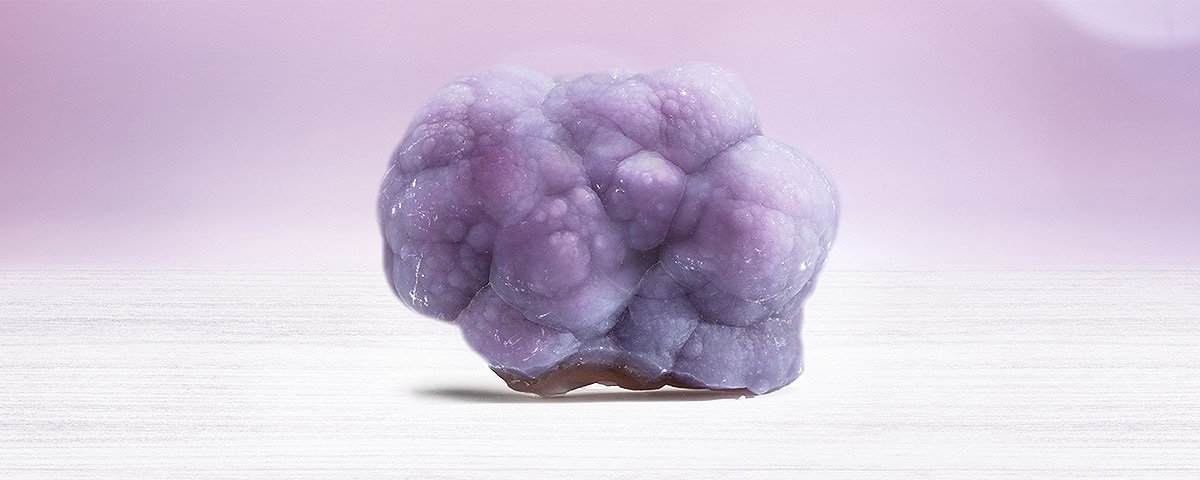Article Highlights
- Botryoidal fluorite is a rare and visually stunning form of fluorite.
- Its unique formation process results in a captivating spherical or grape-like appearance.
- The geological properties of botryoidal fluorite make it a fascinating subject for mineral enthusiasts and collectors.
Let’s embark on a journey into the world of botryoidal fluorite, a mineral that’s as intriguing as it is beautiful. This isn’t your everyday fluorite. It’s a rare and captivating form that’s sure to spark your curiosity and admiration.
The Allure of Botryoidal Fluorite
Botryoidal fluorite is a sight to behold. Its name comes from the Greek word ‘botrys’, which means ‘bunch of grapes’, and that’s exactly what it looks like. Picture a cluster of grapes, but instead of juicy fruit, you have a collection of smooth, rounded mineral formations. It’s a geological wonder that’s as much a work of art as it is a product of nature’s processes.
The Formation of Botryoidal Fluorite
So, how does fluorite take on this unusual form? It all comes down to the conditions under which it forms. Fluorite, or calcium fluoride, usually crystallizes in cubic or octahedral shapes. But when the conditions are just right, it can form as botryoidal or globular masses.
This happens when fluorite crystallizes in a gel-like silica substance. As the fluorite grows, it pushes outwards against the silica, forming a rounded shape. Over time, these rounded shapes can accumulate to form a botryoidal cluster. It’s a slow and steady process, but the end result is well worth the wait.
The Geological Properties of Botryoidal Fluorite
Botryoidal fluorite shares many of the same properties as regular fluorite. It has a Mohs hardness of 4, which means it’s relatively soft and can be scratched by a knife. It’s also highly reactive under ultraviolet light, glowing brightly in beautiful shades of blue, purple, or white.
But what sets botryoidal fluorite apart is its unique surface texture. Unlike the smooth faces of cubic fluorite crystals, botryoidal fluorite has a bumpy, undulating surface. This gives it a tactile appeal that’s hard to resist. It’s like holding a piece of nature’s own bubble wrap in your hands.
The Rarity of Botryoidal Fluorite
Botryoidal fluorite is a rare find. It’s only been discovered in a handful of locations around the world, including China, India, and the United States. This rarity adds to its allure and makes it a prized specimen for mineral collectors.
The color of botryoidal fluorite can vary depending on the specific minerals present during its formation. It can range from a deep, royal purple to a vibrant green, and even a golden yellow. Each piece is unique, adding to the excitement of discovering a new specimen.
The Appeal of Botryoidal Fluorite
There’s something truly special about botryoidal fluorite. It’s not just a mineral; it’s a testament to the incredible processes that take place beneath the Earth’s surface. Each botryoidal cluster tells a story of slow growth and transformation, of the interplay between different elements and conditions.
Frequently Asked Questions About Botryoidal Fluorite
What is Botryoidal Fluorite?
Botryoidal Fluorite is a rare form of Fluorite that has a unique, grape-like or spherical appearance.
Where does Botryoidal Fluorite come from?
Botryoidal Fluorite has been found in several locations around the world, including China, India, and the United States.
What colors does Botryoidal Fluorite come in?
Botryoidal Fluorite can come in a variety of colors, including purple, green, and yellow.
Is Botryoidal Fluorite rare?
Yes, Botryoidal Fluorite is considered rare due to its unique formation process.
Can Botryoidal Fluorite be submerged in water?
Yes, it can be submerged in water, but prolonged exposure may cause surface damage.
Is Botryoidal Fluorite a sun safe crystal?
No, prolonged exposure to sunlight can cause color fading in Botryoidal Fluorite.
How should I care for my Botryoidal Fluorite?
Avoid harsh chemicals and clean it with a soft cloth. Prolonged exposure to sunlight or water may cause damage.
What is the price range for Botryoidal Fluorite?
The price can range from $10 to $100 per carat, depending on quality and color.
Is Botryoidal Fluorite transparent or opaque?
Botryoidal Fluorite is typically transparent to translucent.
Does Botryoidal Fluorite glow under UV light?
Yes, Botryoidal Fluorite is known to fluoresce under UV light, often glowing in shades of blue, purple, or white.
What is the texture of Botryoidal Fluorite?
Unlike regular Fluorite, Botryoidal Fluorite has a bumpy, undulating surface due to its unique formation process.
| Botryoidal Fluorite Physical Properties | |
|---|---|
| Crystal Structure | Isometric |
| Mineral Class | Halides |
| Specific Gravity | Approximately 3.18 |
| Formula | CaF2 |
| Hardness | 4 on the Mohs scale |
| Transparency | Transparent to translucent |
| Chemical Composition | Calcium Fluoride |
| Locations | China, India, United States |
| Rarity | Rare |
| Can Be Submerged in Water | Yes, but prolonged exposure may cause surface damage |
| Sun Safe Crystal | No, prolonged exposure to sunlight can cause color fading |
| Special Care Instructions | Avoid harsh chemicals, clean with a soft cloth |
| Price/Carat | $10 – $100, depending on quality and color |
| Botryoidal Fluorite Metaphysical Properties | |
|---|---|
| Chakras | Heart Chakra, Throat Chakra |
| Zodiac Signs | Capricorn, Pisces |
| Planets | Mercury |
| Numerical Vibration | 7 |
| Elements | Air, Water |
| Symbolism | Intuition, Mental Clarity, Aura Cleansing |
| Birthstones | February (modern birthstone) |
| Affirmations | “I am clear in my thoughts and communication.” |
| Emotional Conditions | Stress, Anxiety, Emotional Trauma |
| Spiritual Purposes | Meditation, Energy Cleansing, Spiritual Growth |
| Crystal Combinations | Amethyst, Clear Quartz, Rose Quartz |



